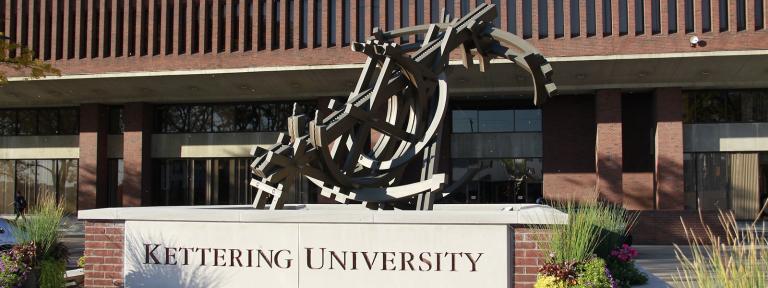
“You share findings with other students. It helps broaden your perspective about the startup culture and what other opportunities are out there.”
Hunter Casbeer and Saheb Kapoor want to fuel the entrepreneurial spirit at Kettering University and have done so by networking with leaders on other campuses across the country as a part of the University Innovation Fellows program last winter.
The intensive 6-week program was run by the National Center for Engineering Pathways to Innovation, funded by the National Science Foundation and directed by Stanford University and the National Collegiate Investors and Innovators Alliance. The program brought together 110 fellows representing 78 universities with the aim of reflecting on entrepreneurial opportunities available on each campus and the development of a plan for expanding those efforts.
“You aggressively pitch to investigate the ecosystem at your university,” Casbeer said. “You share findings with other students. It helps broaden your perspective about the startup culture and what other opportunities are out there.”
Saheb Kapoor '14 and Hunter Casbeer
Casbeer’s interest in large-scale scientific problems and the relationship between innovation and entrepreneurship began at his high school in Fredericksburg, Texas. He enrolled in the school’s groundbreaking rocket program which historically broke the speed of sound in 1998 and has developed rockets capable of reaching space since 2008. He participated in both of these projects in his junior and senior year respectively.
Casbeer, a sophomore in the Electrical Engineering program, and Kapoor, a spring 2014 graduate from the Mechanical Engineering program, were involved with the Kettering Entrepreneur Society (KES), which connected them with Dr. Massoud S. Tavakoli, professor of Mechanical Engineering and head of the Innovation to Entreprenership Across the University (i2e-AU) initiative, and eventually the University Innovations Fellows Program.
“One of the biggest benefits to be a part of the program is the ability to connect with other students around the country,” Casbeer said. “That’s a network you hold onto and you see the success on their campuses and it inspired me to continue my work here at Kettering.”
The program concluded with a trip to California and a visit to Google’s corporate headquarters and the infamous “Google Garage” – the company’s world-famous Makerspace. They also had the opportunity to meet executives and leaders from Google and hear their experiences with attempting to solve the greatest modern problems around the globe.
“What they do is start with a crazy idea. One problem for example is the internet - a large part of the world doesn’t have access to it,” Casbeer said. “They start off with 100 ideas, bring it down 50, then 10, and then finally get it down to one. So on the subject of the Internet, they are now putting up space balloons to solve this problem by providing third world countries with access to the Internet.”
Casbeer and Kapoor concluded the program by identifying six unique student priorities for Kettering University: 1) An area for rapid prototyping; 2) Research Tying in with Innovation and Engineering; 3) Learning to Innovate using Art and Creativity; 4) Tedx Event; 5) Maker Fair; and 6) Bulldog Demo Days.
“When I came back to campus, I immediately shared our findings with the Kettering Entrepreneur Society,” Casbeer said. “We mapped out what we wanted to do and the first thing is to create a space for prototyping at Kettering.”
In the produced plan, Casbeer and Kapoor referred to this space as “Tinkering Space” or “T-Space” for short and identified the second floor of the Mott Building on campus as a potential destination.
“From being at Stanford, from seeing their Makerspace and the types of environment that a leading university and business have, that gave us a pretty good idea of what it would take to make a successful space for innovation and entrepreneurship back at our university,” Casbeer said.
The goal of the “T-Space” at Kettering is to merge the sciences and business in order to spur innovation on campus and provide the students with a pathway to make their entrepreneurial ambitions a reality.
“It could be a place for anything. We don’t want to put any limitations on it,” Casbeer said. “We want to create an area that inspires people to be creative. Our motto is ‘think tinker thrive.’”